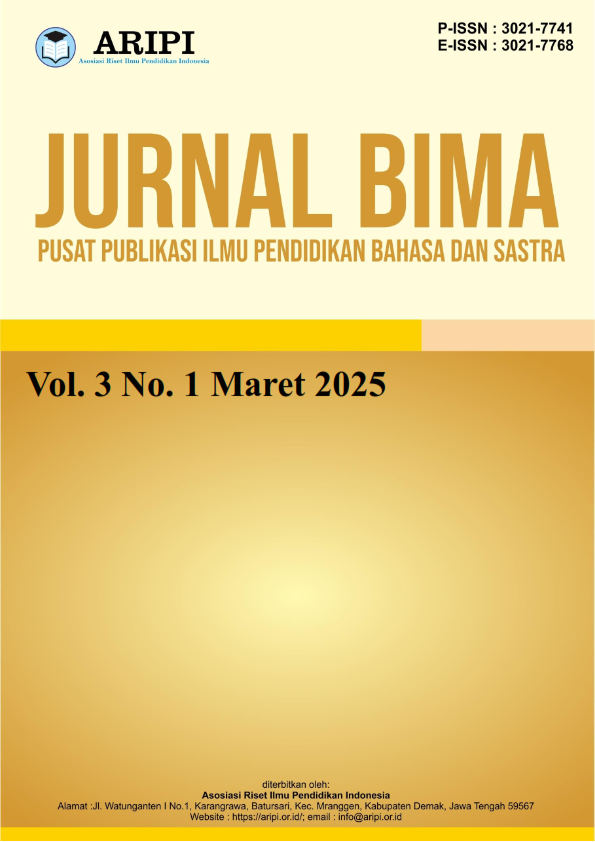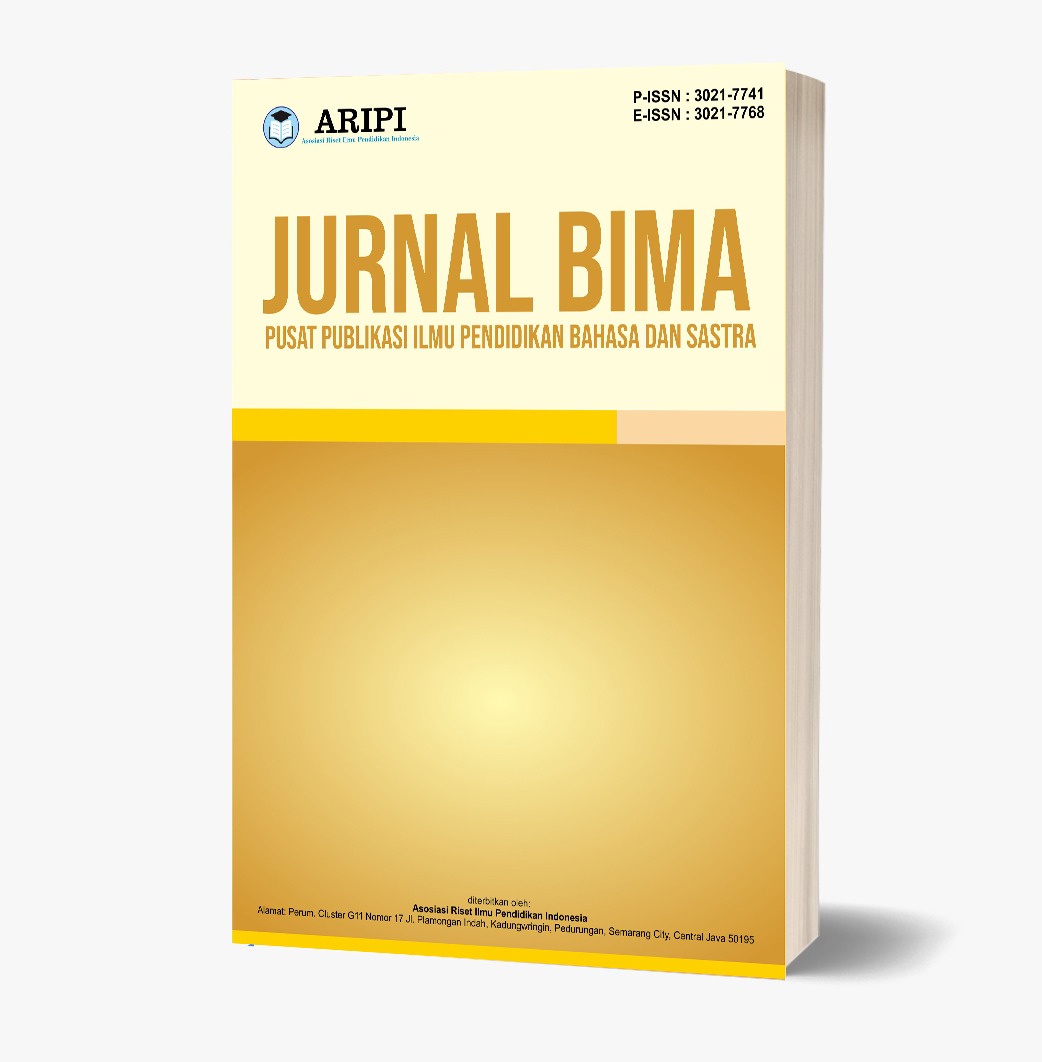Campur Kode pada Novel KKN (Kuliah Kerja Ngebaper) Karya Nurul Vidya Utami
DOI:
https://doi.org/10.61132/bima.v3i1.1410Keywords:
Language, code-mixing, form of code-mixing, novelAbstract
This study aims to enable researchers to describe the types of code mixing contained in the KKN Novel (Kuliah Kerja Ngebaper) created by Nurul Vidya Utama. The researcher conducted the study using a qualitative method accompanied by a qualitative descriptive approach. Meanwhile, the method of collecting information and data used a direct method in the form of dialogue analysis in the related novel. The researcher himself acted as the data collection instrument. In addition to the data notebook, the main instrument used in this study was the researcher himself. Through the results of the analysis obtained in the KKN novel (Kuliah Kerja Ngebaper) which included the combination of elements in the form of 25 words, the combination of elements in the form of 18 phrases, the combination of elements in the form of 8 basters, the combination of elements in the form of 1 repetition, and the combination of elements in the form of 1 idiom. Knowing that there are two types of code mixing, which are external and internal code mixing. English, Japanese, Mandarin, and Arabic are classified as external code mixing. While Betawi, Sundanese, and Dawan Amanuban languages are included in languages that experience code mixing. The code-mixing order itself can be divided into three, namely adjectives, nouns, and verbs. It is hoped that in the future researchers can be an alternative reference for subsequent research in the field of sociolinguistics, especially for campus studies of literary greeting codes.
Downloads
References
Alawiyah, S. R., Agustiani, T., & Humaira, H. W. (2021). Wujud dan Faktor Penyebab Alih Kode dan Campur Kode dalam Interaksi Sosial Pedagang dan Pembeli di Pasar Parungkuda Kabupaten Sukabumi. Jurnal Pendidikan Bahasa dan Sastra Indonesia Undiksha, 11(2), 197-207.
Devianty, R. (2017). Bahasa sebagai cermin kebudayaan. Jurnal tarbiyah, 24(2).
Edi, E., Usop, L. S., Perdana, I., Elnawati, E., & Oktaviani, S. (2022, May). Campur kode pada novel resign!(2018) karya almira bastari. In Prosiding Seminar Nasional Pendidikan, Bahasa, Sastra, Seni, Dan Budaya (Vol. 1, No. 1, pp. 75-89).
El Farouq, M. A. Y. (2019). Analisis Peristiwa Alih Kode dan Campur Kode pada Novel Negeri 5 Menara Karya Ahmad Fuadi. Hasta Wiyata, 2(2), 78-90.
Hajar, S., & Purniawati, H. (2020). Idiom bahasa dawan dialek amanuban di kabupaten Timor Tengah Selatan. Deiksis, 12(03), 280-295.
Lestari, P., & Rosalina, S. (2024). Alih Kode dan Campur Kode dalam Interaksi Sosial antara Penjual dan Pembeli. DISASTRA: Jurnal Pendidikan Bahasa dan Sastra Indonesia, 4(1), 11-19.
Pradanti, D. W. (2022). ANALISIS UNSUR INTRINSIK NOVEL “SESUAP RASA” KARYA CATZ LINK TRISTAN HUBUNGANNYA DENGAN PEMBELAJARAN BAHASA INDONESIA DI SMA. EDUTAMA.
Pradewi, I. A. M. A., Arnati, N. W., & Madia, I. M. (2022). Campur Kode pada Novel Tentang Kamu Karya Tere Liye. Journal of Indonesian Language and Literature Vol, 1(02), 39-49.
Rohmani, S., Fuady, A., & Anindyarini, A. (2013). Analisis alih kode dan campur kode pada novel negeri 5 menara karya Ahmad Fuadi. Basastra, 2(1).
Wiratno, T., & Santosa, R. (2014). Bahasa, fungsi bahasa, dan konteks sosial. Modul Pengantar Linguistik Umum , 1-19.
Yanti, L. (2016). Campur Kode Pada Novel 99 Cahaya Di Langit Eropa Karya Hanum Salsabiela Rais Dan Rangga Almahendra (Kajian Sosiolinguistik). JP-BSI (Jurnal Pendidikan Bahasa dan Sastra Indonesia), 1(1), 23-27.
Downloads
Published
How to Cite
Issue
Section
License
Copyright (c) 2024 Jurnal Bima : Pusat Publikasi Ilmu Pendidikan bahasa dan Sastra

This work is licensed under a Creative Commons Attribution-ShareAlike 4.0 International License.







